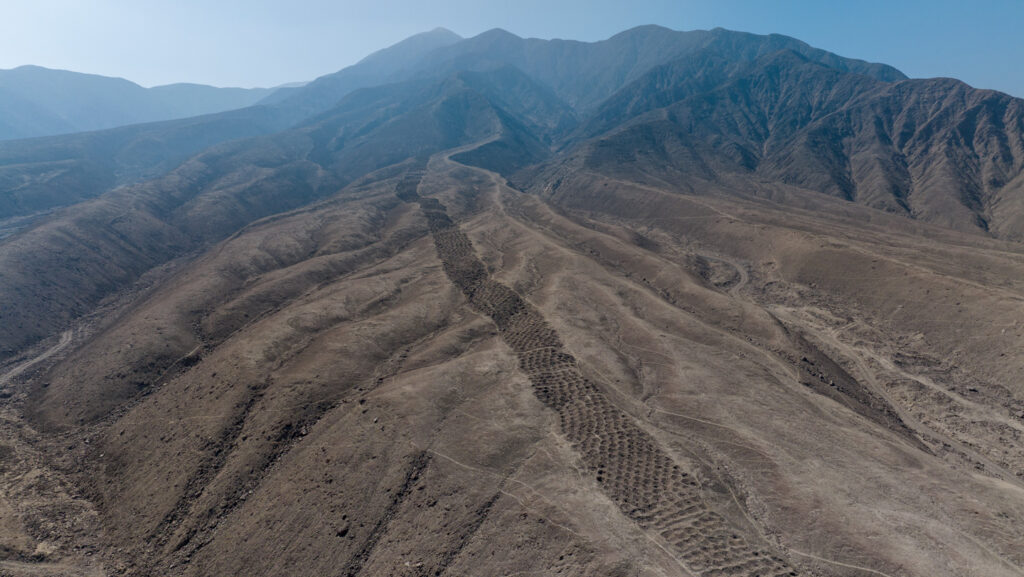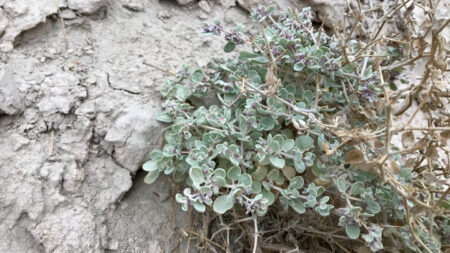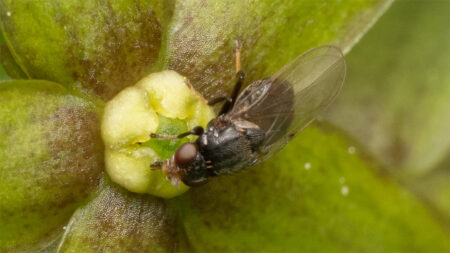New evidence may resolve a longstanding archaeological puzzle in Peru.
A vast line of thousands of holes dug into a ridge in the foothills of the Andes Mountains served as a regional marketplace for pre-Inca groups more than 600 years ago, researchers report November 10 in Antiquity. Inca rulers later repurposed the 1.5-kilometer-long earthwork, known as the Band of Holes, as a place for receiving and distributing taxes, say archaeologist Jacob Bongers of the University of Sydney and colleagues.
The purpose of this mysterious site, also called Monte Sierpe, or serpent mountain, has proven enigmatic since National Geographic published aerial photographs of the monument in 1933. Proposed functions of the holes include defense against attackers, water collection, gardening, ritual design or accounting and storage devices. Monte Sierpe has also inspired fantastic claims that extraterrestrial visitors created this imposing array of holes.
“Monte Sierpe looks like a snake, and its visual prominence was likely meant to attract trading partners,” Bongers says. Economic exchanges before and during Inca times must have incorporated rituals that reflected shared beliefs, he suspects.
Like a growing number of examples in Central and South America, Monte Sierpe demonstrates that ancient communities pooled resources and labor in massive construction projects, Bongers adds.
The new paper makes a strong case for Inca rulers transforming Monte Sierpe from a market for bartering goods into a place for tracking and collecting taxes from their subjects, says archaeologist Dan Sandweiss of the University of Maine in Orono. He cautions, though, that “this explanation is likely but not absolutely proven.”
Microscopic plant remains identified in 19 Monte Sierpe holes came from crops such as maize and wild plants traditionally used to make baskets. A radiocarbon date for a piece of burned wood uncovered in one hole fell within the 1300s. The Chincha Kingdom, a wealthy pre-Inca society, controlled the region around Monte Sierpe at that time.
Located near the intersection of major pre-Hispanic roads and trade routes, Monte Sierpe provided a prime spot for groups from the coastal plains and highland valleys to exchange various items, Bongers and his colleagues say. Chincha-era traders probably lined holes with plant fibers and placed maize or other goods inside, the researchers propose.
Large numbers of traders found ways to barter with each other using the serpentine monument, the team hypothesizes. For instance, a certain number of holes containing maize could have been equivalent to a certain number of holes containing cotton.
Inca conquerors of the Chincha Kingdom treated the Band of Holes as an accounting device for tax payments, Bongers’ group suggests. Drone imagery found that Monte Sierpe’s roughly 5,200 holes cluster into at least 60 sections separated by empty spaces. Sections display different construction styles, such as holes with and without stone linings.
Numerical patterns in hole layout and numbers of holes across sections correspond to patterns on local Inca knotted strings called khipus, Bongers says. Inca officials used khipus for record keeping and specifying types and amounts of tribute owed by Inca communities.
Monte Sierpe’s hole arrangements may also align with Inca tribute lists for Andes communities recorded in the 16th century by Spaniards. Each segment corresponded to a local kin or community group, Bongers speculates. These groups took turns maintaining the thousands of holes and depositing goods into their respective sections as part of the Inca tribute system, he suggests.
However trading and tribute collection played out at Monte Sierpe, Bongers’ group provides different lines of evidence for people having made and used the Band of Holes. “This lays to rest the pseudoscientific notion that aliens must have been involved,” Sandweiss says.
Read the full article here














